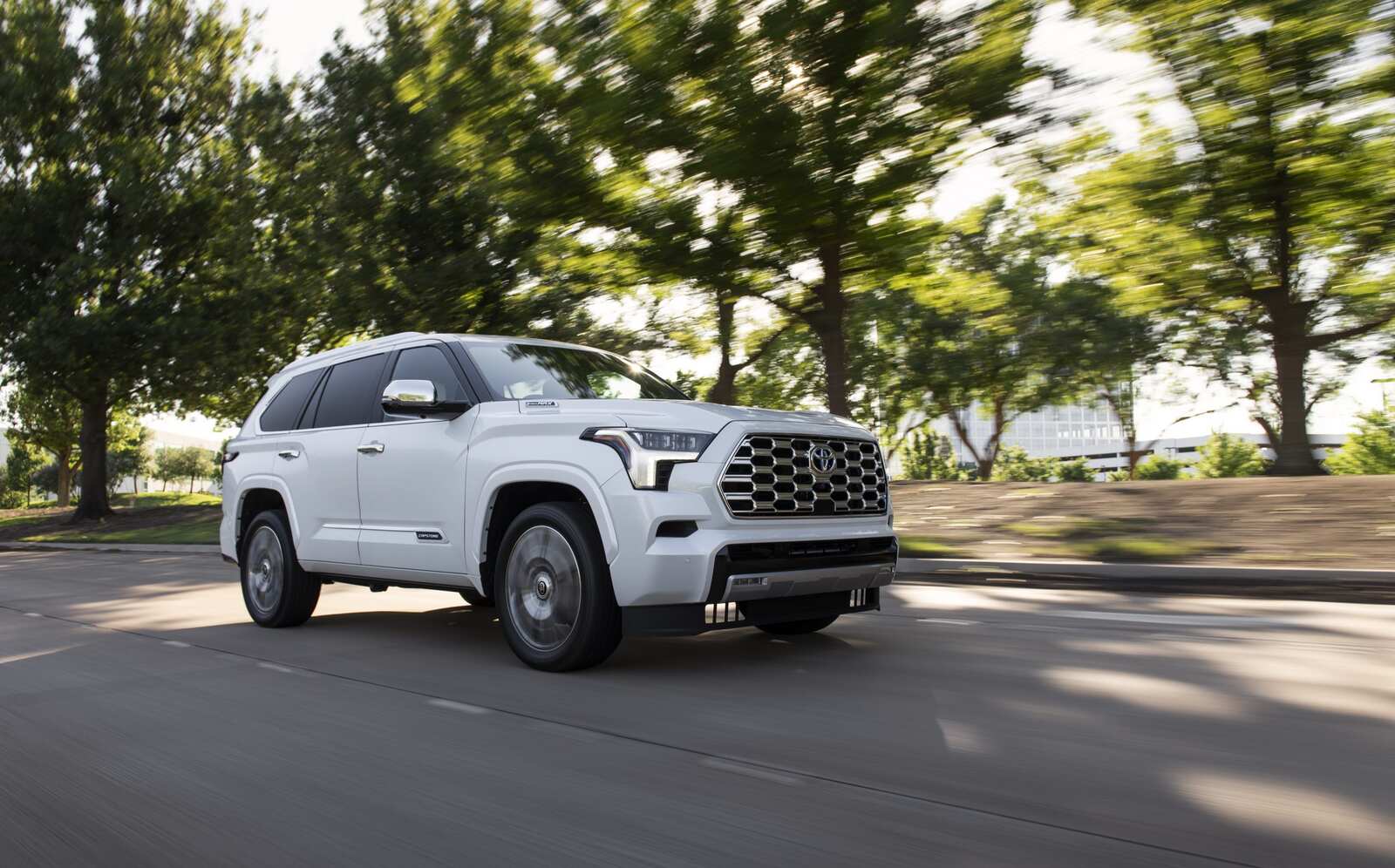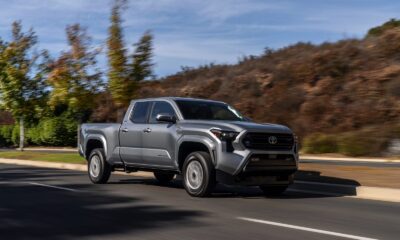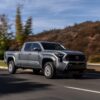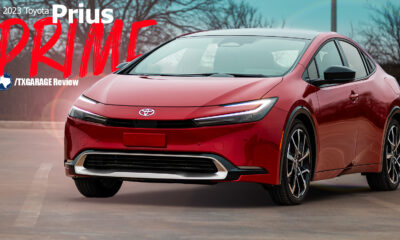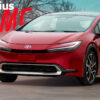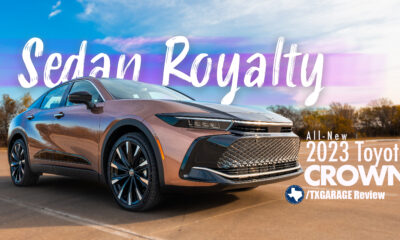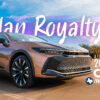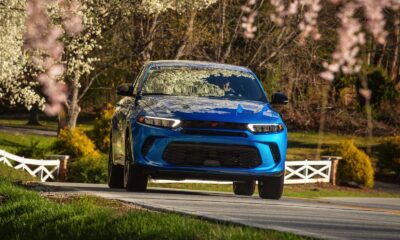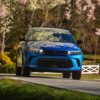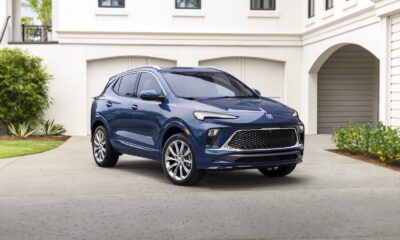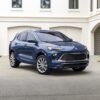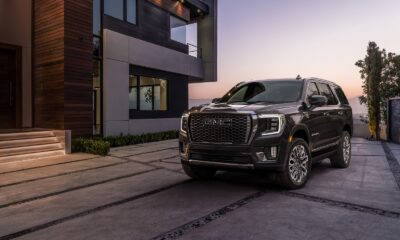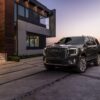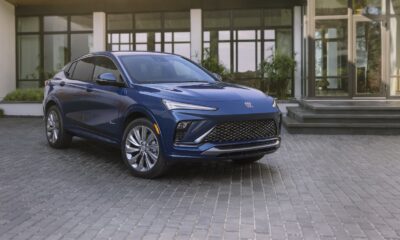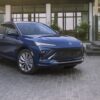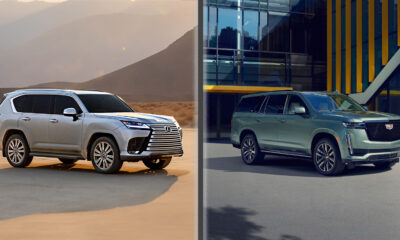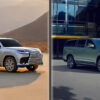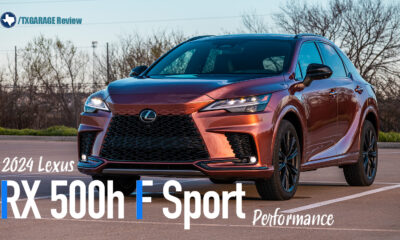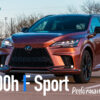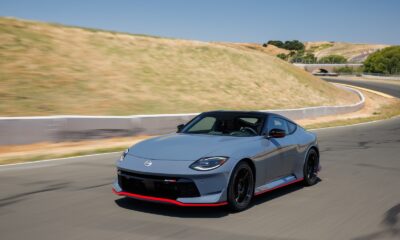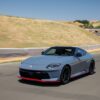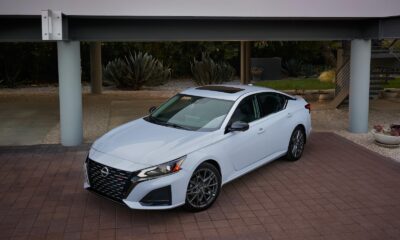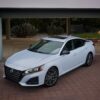Car Reviews
Toyota’s New Sequoia SUV – TOYOTA TOWS THE LINE
Toyota’s New Sequoia SUV
TOYOTA TOWS THE LINE
Maybe my expectations were too high.
To be fair, as overpriced, gas-guzzling, and generally unnecessary land yachts go, the 2023 Toyota Sequoia, the big SUV’s first redesign in 15 years, is fair to middling. That’s not just me talking. On balance, most auto critics are underwhelmed with the seven-seater.
U.S. News and World Report, which takes everybody else’s reviews and averages them, gives Sequoia 7.2 stars out of 10. Consumer Reports, which utilizes a sophisticated and comprehensive rating system that includes categories such as handling, reliability, fuel economy, and safety – areas where large SUVs do not shine – gives it a 59 out of 100. That puts it one point behind the Ford Expedition and four points ahead of the Chevrolet Suburban.
Several reviewers seem to suggest that if Toyota was aiming to be the best large SUV of 2018, it hit a bullseye. Regular readers know that following the lead of my journalistic betters is not my greatest strength; in this case, however, I prefer to follow the crowd.
Starting at a hair less than $60,000 and climbing past $80,000 for our TRD Pro tester, the 2023 Sequoia has a beautiful cabin, impressive drive train, and an admirable fit-and-finish, but rides rough, handles poorly, and provides disappointing fuel economy.
What happened? Let’s unpack this thing.
First impressions matter
Without a doubt, Toyota will sell every Sequoia it can crank out of its San Antonio plant because, in the car business, first thoughts are critical. It is said that 70% of the buying decision occurs in the lizard brain. That uncontrollable, sudden, and visceral reaction is critical. Much like the coastal redwoods after which it is named, the Sequoia makes an immediate, indelible impression.
Bold, muscular lines and a somewhat angry visage are complemented by precise tooling, careful assembly, and flawless paint. Everywhere we went in this vehicle, we were approached by people excited by its looks.
The excitement did not wane when they had an opportunity to sit in it. Standard on all but the base SR model is a 14-inch touchscreen. It makes reading a map while driving easy. The views from a range of exterior cameras, including a birds-eye, 360-degree aspect, are impressive. The menu of other features is long and too cumbersome to tackle while driving, but these are for settings like driver profiles and sound adjustments, which ought to occur in the driveway.
Setting radio favorites is a breeze: simply check or uncheck a heart icon to populate the list.
At the same time, Toyota continues to use buttons for functions such as temperature, fan speed, sync, and airflow mode. At night, with the large screen and all the switches, the feeling of flying a well-equipped airliner is pervasive.
The Sequoia is also rumored to offer wireless Android Auto and Apple CarPlay, but for seven days straight we tried to link to it. Every time, the Toyota refused to recognize our phone, which really hurt its feelings. We recently noted, after a separate but equally abysmal experience, that Toyota/Lexus digital expertise is behind the curve and will not belabor the point now. To be fair, the phone did not recognize the Toyota, either.
Typically for Toyota, the cabin is chock full of cup holders, cubby holes, and charging ports.
Seats for grownups make a memorable impression, especially on a road trip. Our $80K tester came with leather surfaces over rich padding. Both front seats were heated and cooled and had seven-way power seats with adjustable lumbar support.
Two rear captain’s chairs amidship were equally comfortable, but the rear was a little tight, with zero headroom for this six-footer.
Cargo space is seriously limited for such a large vehicle. The Sequoia is a foot shorter than the Expedition or Tahoe, and that shows up in the rear. There might be enough to carry a family’s luggage to the airport but a camping trip? Fugeddaboudit. Sequoia has 42.5 ft3 of volume in the hold. Suburban has 70 and Expedition has 66.
Still, you could put a couple of kids back there, especially if they’re short.
Rough ride
Make that short and heavy kids.
One reason I was excited about seeing the new Sequoia is that it is built on Toyota’s TNGA-F platform, which is also used on the new Land Cruiser and Lexus LX and TX. Using modern metallurgy and assembly techniques is both lighter and stronger than the old body-on-frame method.
This should result in a more rigid truck, meaning it should ride and handle better, yet provide passengers with improved safety.
Given that advantage, Toyota engineers opted for power-assisted rack-and-pinion steering – all the rage when introduced 49 years ago. The standard these days is drive-by-wire, which allows for a more linear – what you put in is what you get out – feel. In the age when computer systems keep vehicles centered in their lanes, drive-by-wire is the standard.
Rack-and-pinion steering on a large vehicle feels soft and vague. On a 6,000-lb truck, it feels as ponderous as grandfather’s ’66 Cadillac through a series of S-curves (with apologies to the cones but with great gratitude to the old cop who decided I needed to know how to drive fast and to box well enough to survive my smart mouth – his words, not mine).
Given a handling advantage, Toyota also chose to ditch the independent rear suspension – which gave it a markedly better ride than competitors who subjected rear passengers to pick-up bounce. Instead, Toyota went with a solid axle. While rear coil springs are absorbent enough for good roads, as soon as there are imperfections, the rear gets jiggly.
Why would they do that? If you can’t answer that question, you can’t write about trucks in Texas. It improves payload and towing capacity. With its tiny cargo space, the Sequoia already suffers payload envy, but the new setup boosted towing capacity by roughly 21% to 9,000 lbs. That’s 600 lbs. more than a Tahoe and only 300 lbs. shy of class leader Expedition.
I don’t recall seeing a soccer mom hauling a boat, but if she does, that rear end might settle right down. On the other hand, heavy kids might do the trick.
Short, heavy kids.
An almost-great engine
The clear star of this show is the driveline, headlined by a 3.5-L twin-turbo V6 hybrid i-FORCE MAX engine. First unveiled on the new Tundra, it cranks out 437 hp and 583 lb.-ft. of torque and does it faster than a panicked cat and more smoothly than a shot of Tennessee whiskey. Move over, Ford EcoBoost. There’s a new sheriff in town.
Speaking of Ford, it took those folks plus a contingent from General Motors the better part of a decade to sort out the 10-speed transmission they co-developed. Toyota seems to have perfected it right out of the box.
If you need an SUV that can blow the pants off some kid at a stoplight, here it is. With an electronic supercharger, there is no lag. Accelerator response is both linear and invigorating. Add in the torque from the electric motor in the hybrid system and you have the fastest large production SUV on the planet: zero to 60 in 5.6 seconds, the ¼-mile in 14.3 seconds at 94 mph.
In the TRD Pro version ($76,065) sport-tuned Bilstein® monotube shocks and TRD-tuned springs do a reasonable job holding the road.
Mashing the gas pedal is fun, but the downside comes from watching the bars on the fuel gauge disappear. The old Sequoia was one of the worst gas hogs on the highway, averaging roughly 13 mpg. The new, hybrid version is better, but not as good as it may seem. The EPA estimates a 2WD Sequoia will average 22 mpg overall, 21 city, 24 highway.
Our tester, however, came with 4WD (deduct 2 mpg), taller wheels and off-road tires (deduct 2 mpg), and a large roof rack (deduct 3-4 mpg). Because it runs on premium fuel, we did our best to maximize fuel economy on about 250 miles of combined driving. We got 16 mpg, which is exactly what several other critics observed.
Consumer Reports got 18 mpg, which is still better than the 16 mpg seen in competitors from Ford and Chevrolet.
To put that into context, existing law demands every automaker reach a combined average fuel economy in its light-duty vehicles of 49 mpg by 2026. Unless there is a change in the executive and legislative branches, that will continue to be the law.
All this may not be important to you, but for millions of swing-vote suburban Americans this week breathing a gaseous cocktail of poisons, it might be.
Toyota knows better
With a rough ride and disappointing fuel economy, has Toyota lost its way? Don’t they know what they are doing?
Of course, they do.
The Sequoia would be unbeatable if it only had a plug-in hybrid component. You know, like the RAV4 Prime, which goes 40 miles every day on pure electric power before reverting to its gas-electric hybrid components.
That doesn’t sound like much, but the U.S. Department of Transportation figures the average American drives 36.9 miles per day. Value Penguin says only 36% of the country even drives every day and 79% drive less than 200 miles per week.
So, if you had a car that could go 30 miles every day, and charge it up on a 110 outlet for less than a couple bucks every night, you’d be in high cotton, right? You could stick it to the Arab oil oligarchy. You could go for months without $100 fill-ups.
Meet the Lexus LX, introduced Thursday. It is the new Sequoia with prettier sheet metal and a plug-in hybrid to go with the hybrid i-FORCE MAX.
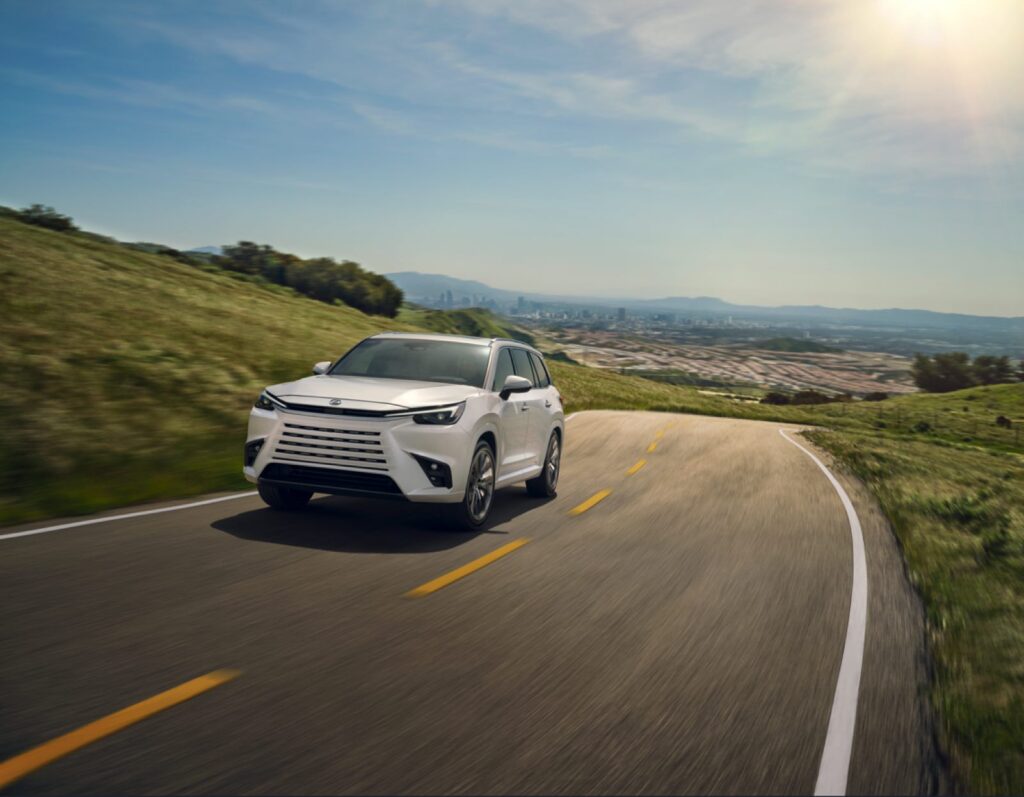
Why not just put it in the Sequoia?
I suppose that answer will elicit lengthy explanations about product development timelines, supply chains, and focus groups. Everything is about focus groups these days. Perhaps more relevant is that it will be built in the U.S. and, thus, will be eligible for a tax credit of up to $7,500.
Maybe Toyota is following the lead of Ford, which boosted the base price of its electric pickup, the Lightning, by 40% since January 2022. The plug-in Escape has seen similar increases.
As fast as the government hands out incentives, it seems, corporations figure out ways to get them into their pockets.
At some point, the plug-in hybrid will trickle down to the Sequoia. That would be a fine time to buy one.



